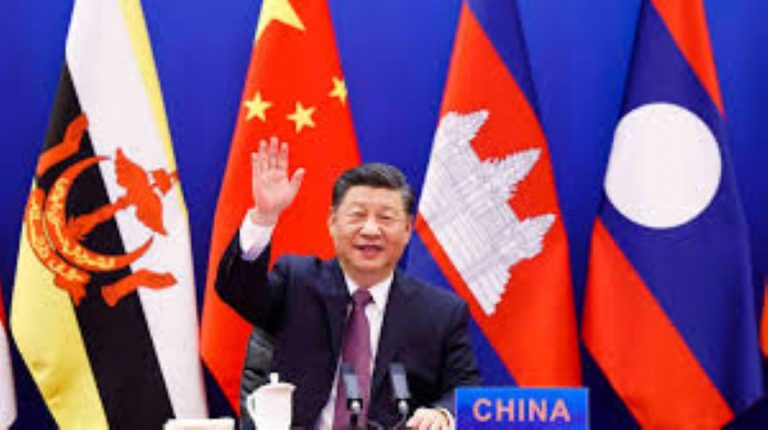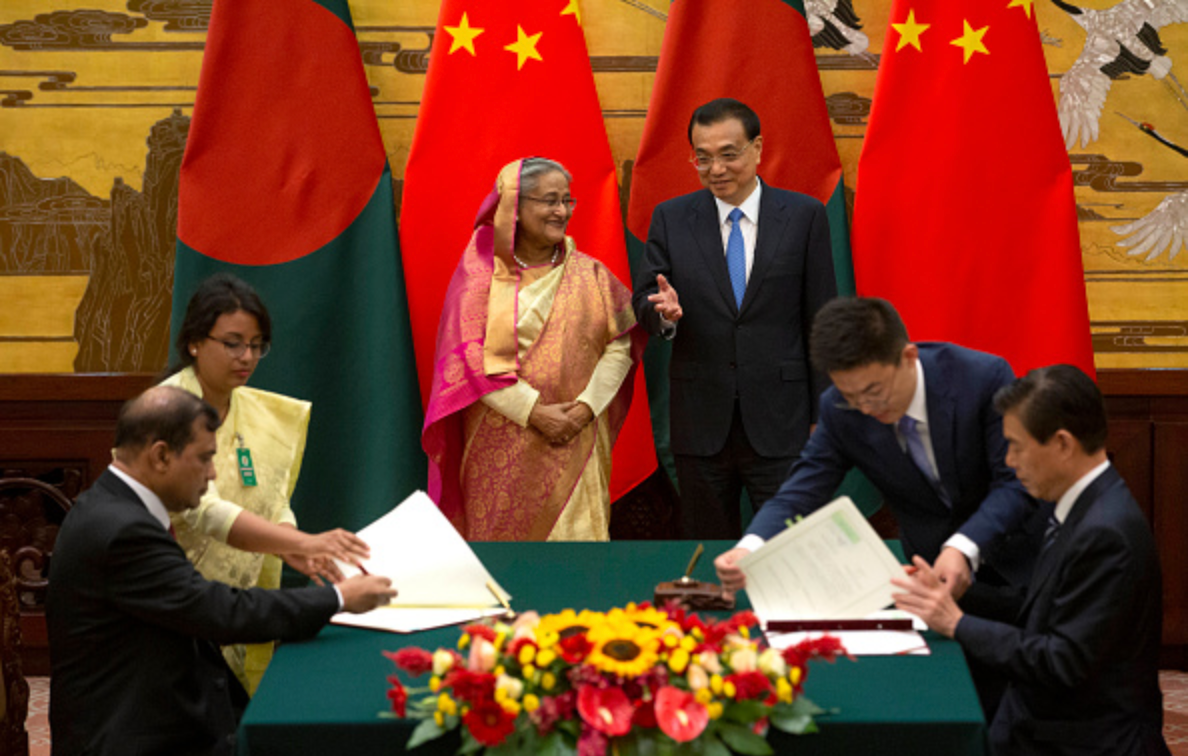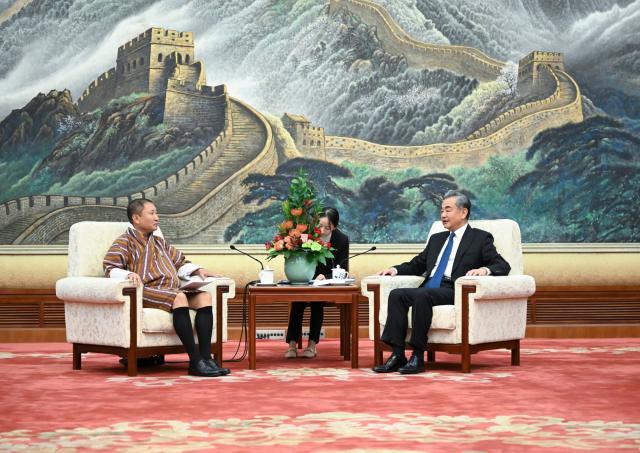
The tilting of Southeast Asian states towards China has been driven by factors like Washington’s misplaced priorities, weak response and investment etc.
Dr. Pervaiz Ali Mahesar
The Southeast Asian region holds a significant position among the great powers in geopolitical contestation. Each of these powers is trying to influence, cooperate, coerce, and leverage the region. In recent years, one could find several scholarly writings on what is happening in Southeast Asia and its relations with the growing powers in the region. In this fast-changing world, analysts are carefully watching the unfolding scenario as the competition between China and the US grows. Each country has its own way and approach to asserting or leveraging the changing geopolitical dynamics. If we look into the past, there has been a flurry of diplomatic meetings, and the exchange of ideas and agreements between Southeast Asian countries and China has doubled since 1991. In 2003, both parties agreed to have a strategic partnership and signed an FTA in 2010. While they had developed a Strategic Vision for 2030 that reflected more engagement and investment.
In the backdrop of this shift, the report published by the ISEAS-Yusof Ishak survey 2024 shows a dramatic shift in the perceptions of Southeast Asian countries towards China. This report showed that 50 percent of the people had a favorable view of China, while 49 percent of the people favored the US. However, this favorable view of Southeast Asian countries towards China has reignited a debate which raises few questions, for instance: is China edging over the US in Southeast Asia? Is the US disengaging from this region? Does China and the US are being wooed or attracted by the regional geopolitical dynamics? Does the US and China are being pushed towards a new cold war in the region? What future holds for the European Union and Indian engagement in the Southeast Asian region amidst growing Beijing-Washington geopolitical contestation? In the backdrop of this scenario, this paper looks into why the Southeast Asian region is tilting towards China rather than America?
 Read: China in South Asia: Bangladesh is Tilting towards China
Read: China in South Asia: Bangladesh is Tilting towards China
As we know, in the recent past, the response of American engagement in the region has remained either issue-based or decreasing itself. Conversely, America is focused on Chinese democracy, trade, human rights, the Indo-Pacific region, and countering China in the region. In this context, American President Joe Biden had invited or hosted Southeast Asian countries in Washington, where it was pledged that America would spend 150 million dollars. This volume of spending is less than the Chinese pledge in 2021 to invest around 1.5 billion as development assistance to various countries. This demonstrates how American neglect of the region benefits Beijing.
A report published by the ISEAS shows a dramatic shift in the perceptions of Southeast Asian countries towards China. This report showed that 50 percent of the people had a favorable view of China
In addition to this, it has been observed that America is more interested in security engagement than economics in the Southeast Asian region. While China is a big economy, a big market, a natural neighbor, has common borders, and has less conflicting relations with Southeast Asian countries, China’s increasing trade and investment in the region, particularly in areas such as agriculture, health, technology, education, and cultural exchanges, demonstrates its growing influence and interest.
Growing Economic Interdependence
The Southeast Asian region’s economic interdependence on China has increased manifold. In context to this, their mutual trade volume has accelerated to 975.3 billion in 2022. While in October 2003, the 7th ASEAN-China Summit was held in Bali, Indonesia, in which various heads of state jointly declared a Strategic Partnership for Peace and Prosperity. Notably, China-ASEAN has inked a landmark action plan for three years. These action plans range from 2005–2010, 2011–2015, 2016–2020, 2021-2025. The new action plan (2021–2025) was adopted in November 2020 by the ASEAN-China Foreign Ministers. As an engine of global economic growth, Southeast Asia’s eleven nations combined GDP is $3.6 trillion, while sea routes like the South China Sea and Straits of Malacca hold great importance for the geostrategic trade of the world. In contrast to this, as a top investor in the region, China is also being seen as assertive, leveraging power with growing clout and suspicion in the region.
It was identified in the Lowy Study (2022) that, in contrast to growing Chinese economic influence in the region, America is showing a weaker response in economic domain but they have more influence in defense domain of the region. Despite the economic hardships and complaints about Chinese debt, Southeast Asian countries find their last resort in China as a lender. It doesn’t mean Americans have done nothing for Thailand, Indonesia, or other states. As the world’s second-largest economy, China is one of the major motivations for Southeast Asian states. Beijing is deeply engaged in this region in different ways; for instance, through the Belt and Road Initiative and the Regional Comprehensive Economic Partnership (RCEP). Their mutual trade has increased from $641.5 billion in 2019 to $975.3 billion in 2022. These figures show that their trade has multiplied; hence, China and Southeast Asian states have become economically interdependent and one of the largest trading partners. Chinese Xi Jinping also emphasized the need to harness the potential of mutual trade and upgrade it to the next level.
Increasing Strategic Partnerships
There are four geopolitical drivers shaping the shift in Southeast Asian countries: first, these states wish to keep a delicate balance of power (China and the US) in the region, secondly, avoid relying on a single power, thirdly, keep away from China-America geopolitical rivalry, fourthly, leverage by attracting and engaging both powers in the region. This region is also aware of the Chinese assertive behavior in the South China Sea and the growing economic clout in the region. There is a wide range of defense cooperation in areas of mutual interest like maritime security, terrorism, humanitarian assistance, non-proliferation, disarmament, and cybercrime. While these issues are navigated through efficient institutional mechanisms like the ASEAN Regional Forum, the ASEAN Defense Ministers’ Meeting, the ASEAN Ministerial Meeting on Transnational Crime, and the ASEAN Ministerial Meeting on Drug Matters. As envisioned in President Xi Jinping’s approach and policy, Beijing intends to foster trade and investment through a shared prosperous destiny; cultivate friendly relations; promote stability, peace, and non-interventionist policy. In a similar way, Southeast Asian states wish to keep a fine balance between two powers; maintain their sovereignty and integrity, maintain a strategic engagement, and navigate challenges in a more pragmatic and nuanced manner.
 Read: Why Bhutan’s tilt towards China may ‘significantly change’ regional dynamics
Read: Why Bhutan’s tilt towards China may ‘significantly change’ regional dynamics
To sum up, apart from what America does in the region, the tilting of Southeast Asian states towards China has been driven by factors like Washington’s misplaced priorities, weak response and investment, issue-based approach, decelerating influence, and security-based approach/engagement in the region. While Beijing appears to be a favorable destination and more appealing due to natural borders, non-interventionism, fewer territorial conflicting ties, more economic engagement, tackling non-traditional security threats, and growing economic power/influence in the region, However, this doesn’t mean that the Southeast Asian states are not wary of Chinese assertive behavior in the South China Sea, the Taiwan factor, unresolved territorial disputes, debt crises, trade imbalances, and growing military might in their neighborhood. Keeping in view the fast changing geopolitics in the region, more favorable perceptions for China could be expected if America goes with the same approach to the region.
Read: Tehran is getting better infrastructure than New York – thanks to China
__________________
Dr. Pervaiz Ali Mahesar is Associate Professor, Department of Political Science, University of Sindh, Jamshoro
Very informative, vivid, and articulately narratived article Sir.